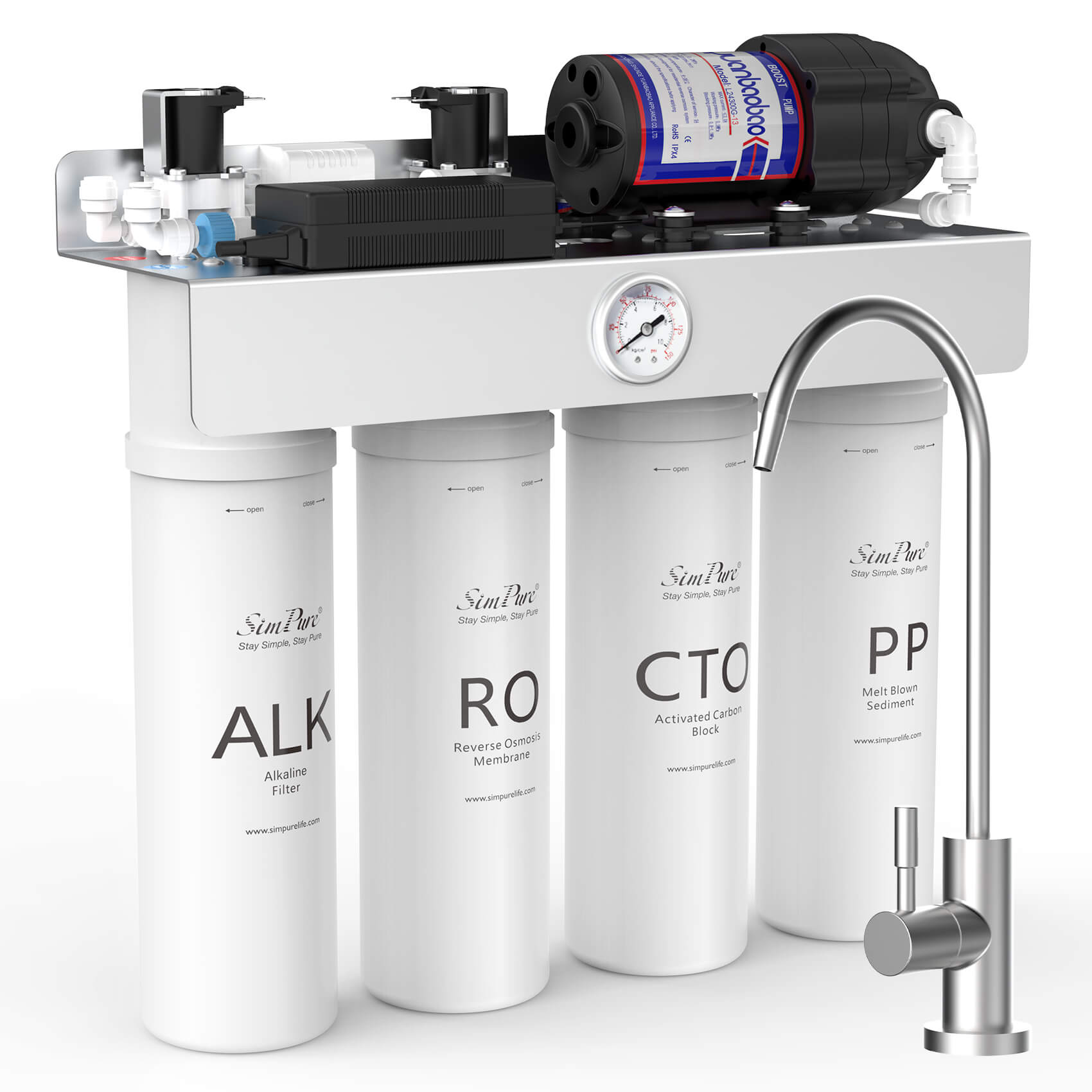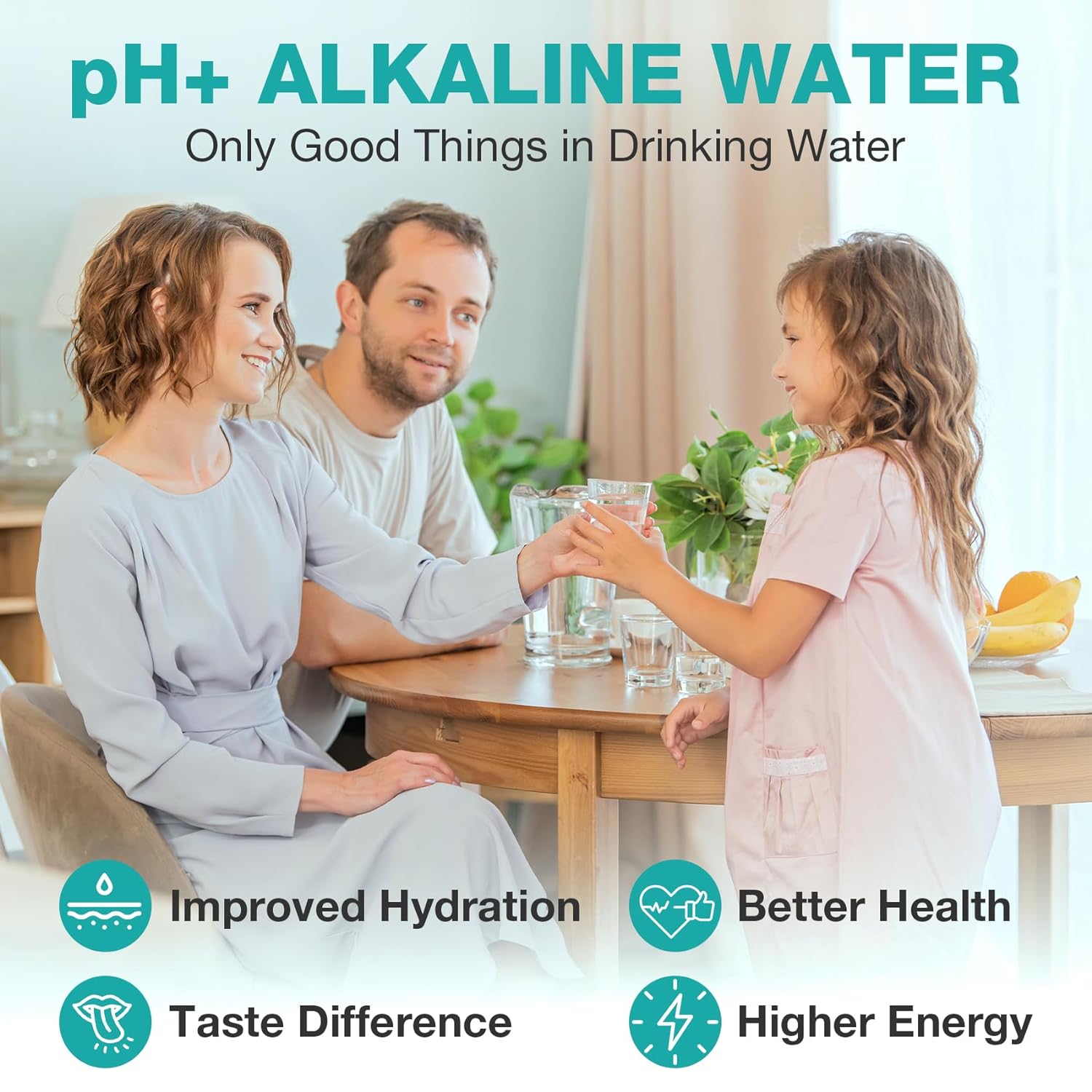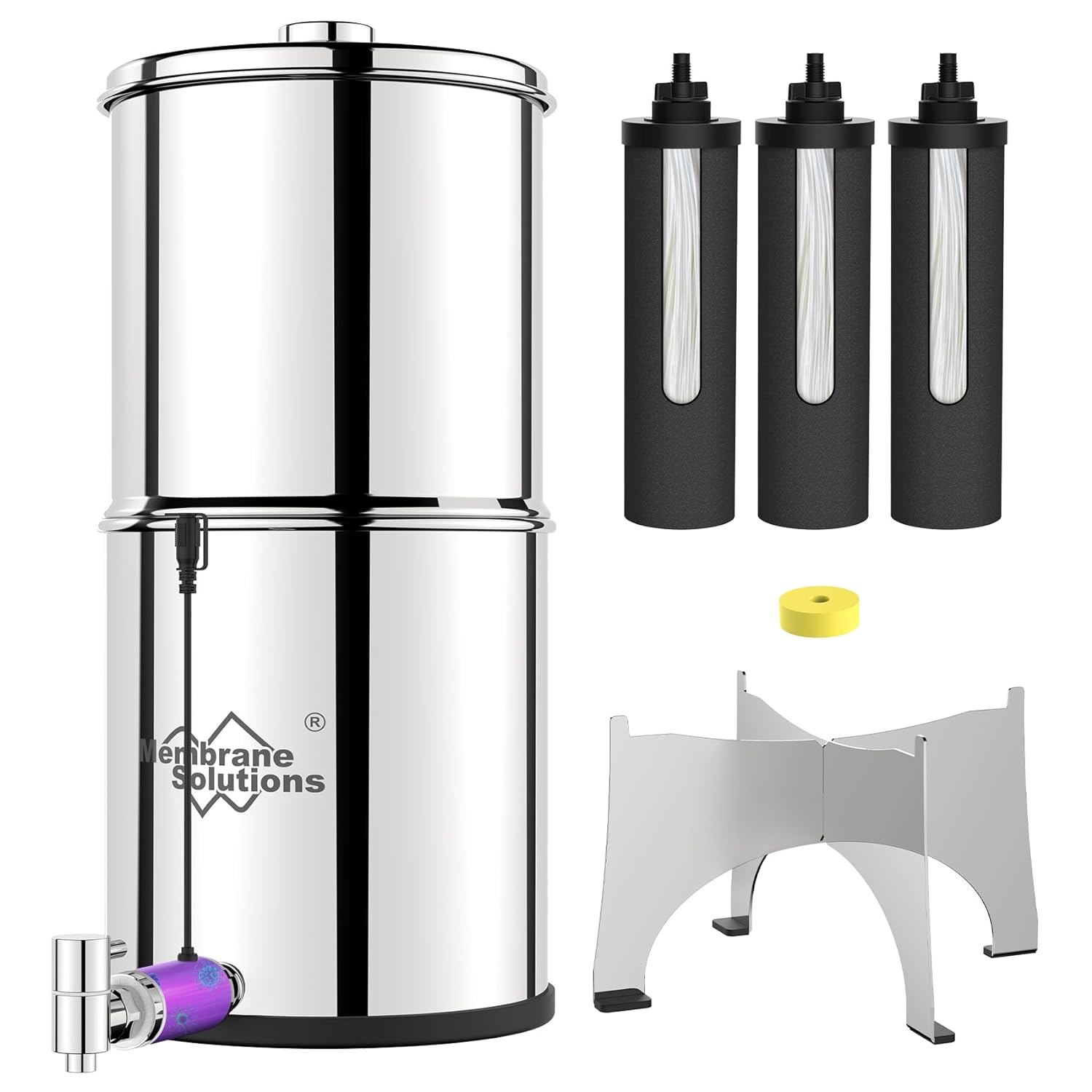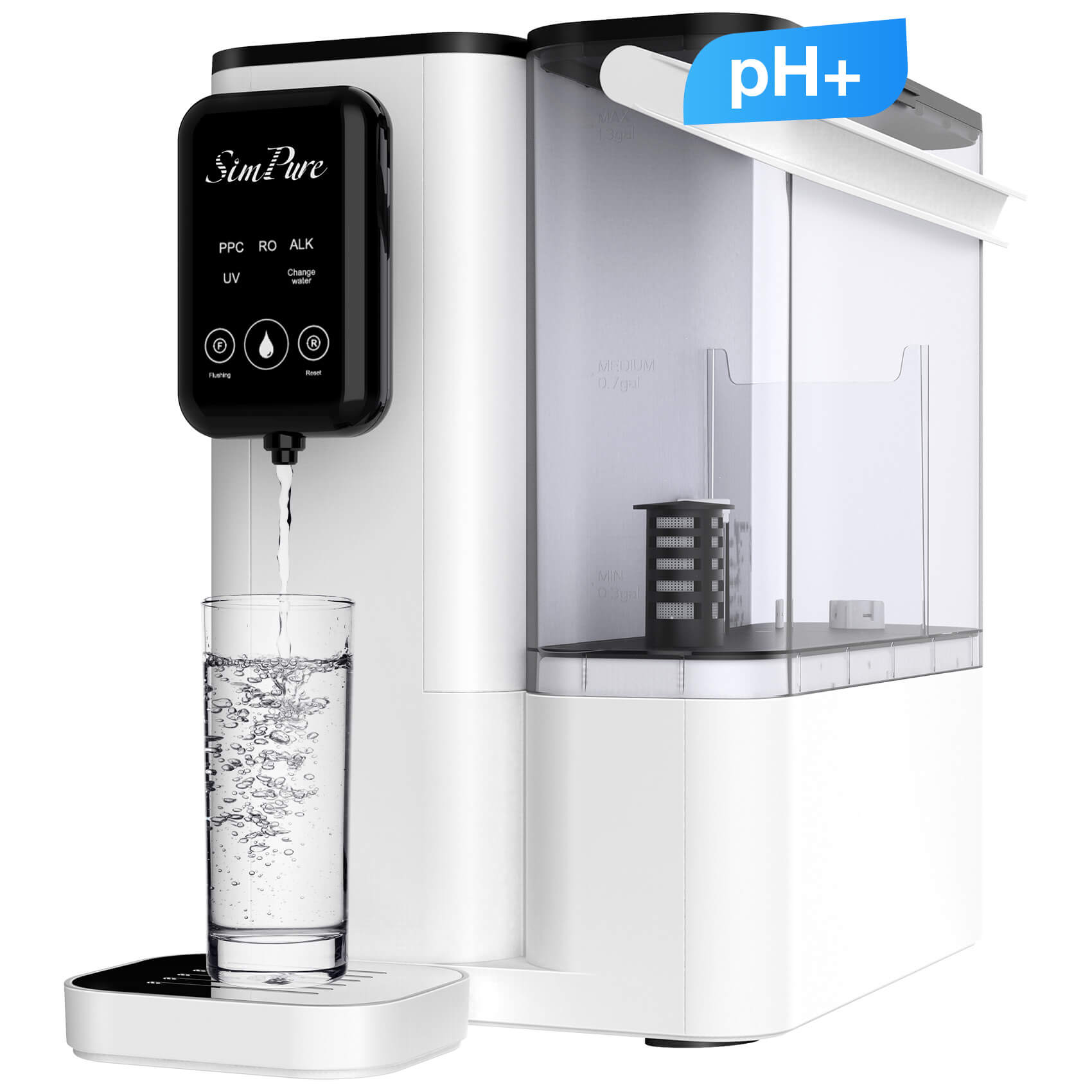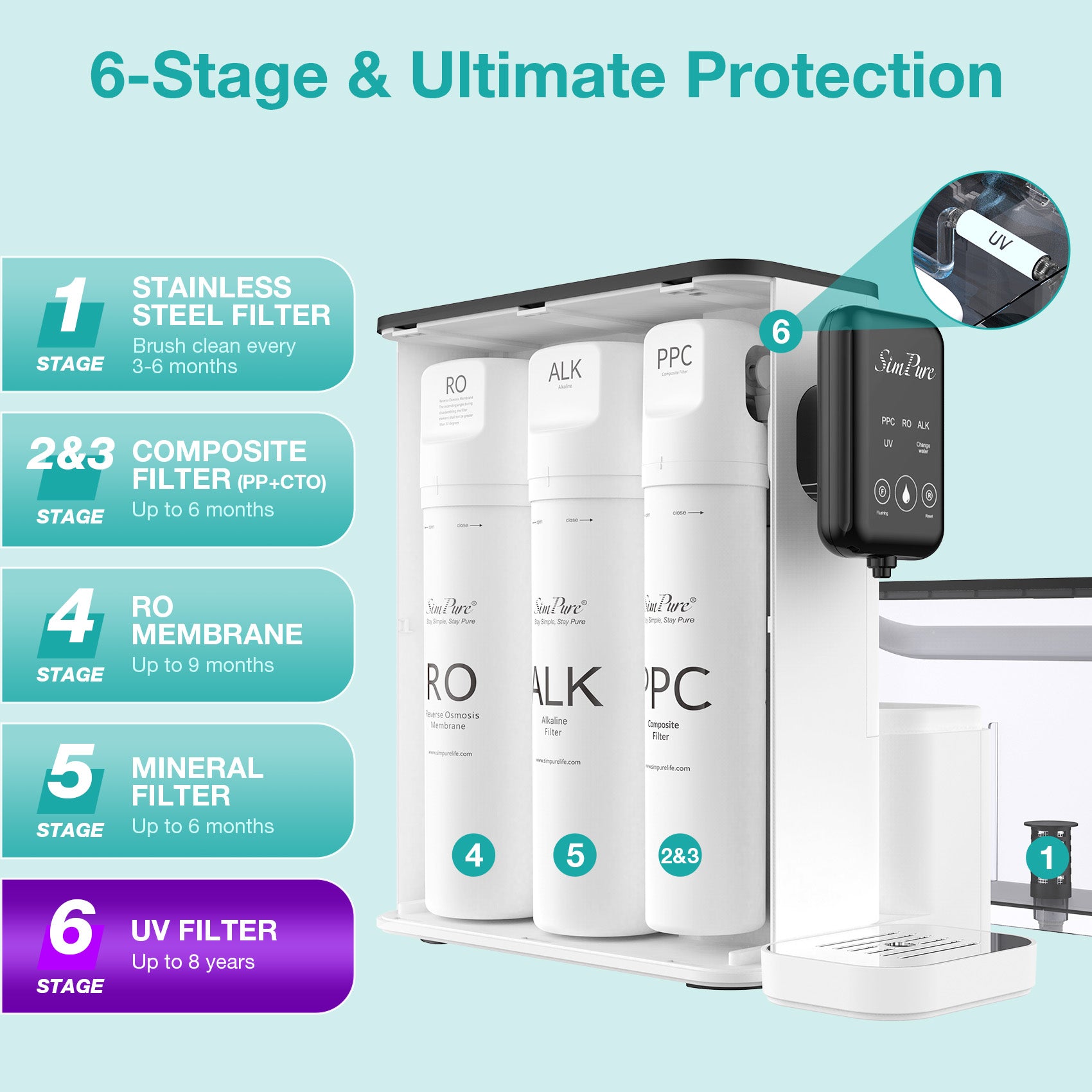Amoebas are single-celled organisms that thrive in different ecosystems. While most types are harmless, there are certain lethal amoebas, including Acanthamoeba spp., Balamuthia mandrillaris and particularly the Naegleria fowleri or the “brain-eating” amoeba that may cause serious brain disorders and potentially be fatal.
Since this brain-eating amoeba is present in warm freshwater and untreated water, it easily travels into the human body via the nose and may cause a severe health condition, also known asprimary amebic meningoencephalitis (PAM). Therefore, it is important to filter water and only consume clean and pure waterto avoid getting exposed to such life-threatening amoebas.
When talking about purifying water, many people have a concern about whether does boiling water kill amoebas. Let’s find out in detail.
Common Types of Amoebas

Amoebas are classified as harmless and pathogenic. It is important to understand the various types of both harmless and dangerous amoebas to understand the scale of the dangers of consuming unfiltered water. Here are a few harmless types of amoebas.
- Amoeba proteus
Amoeba proteus is a large species of amoeba found in freshwater environments and feeds on smaller organisms, including algae, protozoans, and smaller amoeba. They are generally colorless and harmless as they move slowly and pose no threat to human health.
- Pelomyxa
Pelomyxa varies up to 5 mm in length and is found in stagnant freshwater ponds or slow-moving streams. These are also generally harmless.
Let’s examine potentially harmful amoebas.
Naegleria fowleri
Naegleria fowleri, or the brain-eating amoeba is the most dangerous and life-taking amoeba present in warm freshwater that feeds on bacteria and causes serious brain infection known as naegleriasis or primary amoebic meningoencephalitis (PAM).This amoeba is typically found in lakes, streams, hot springs, industrial discharge, and poorly maintained swimming pools. Brain infections are mostly caused when Naegleria fowleritravels through the nose when contaminated water is inhaled through it.
Some of the symptoms associated with PAM include headaches, vomiting, seizures, stiff neck, fever and in worst case scenarios, hallucinations, drooping eyelids, and loss of vision.
Acanthamoeba spp.
Acanthamoeba spp. is also a pathogenic amoeba found in soil and freshwater that sometimes causes severe fatal infections in humans and animals. They may cause Acanthamoeba keratitis, a painful eye infection that may lead to blindness in individuals who wear contact lenses but don’t practice proper hygiene.
Entamoeba histolytica
Entamoeba histolytica is a dangerous amoeba that infects humans and primates by causing amoebiasis, an intestinal illness that leads to severe dysentery. Entamoeba histolytica is transmitted by ingesting contaminated food and water and is mostly found in areas with poor sanitation. It is estimated to kill over 55,000 people each year.
Potential Health Risks of Amoeba in Water

The prevalence of amoeba in water is a serious concern and must not be taken lightly. Failing to filter water and consuming contaminated water may put you at a higher risk of developing the following severe health risks associated with pathogenic amoebas.
Primary Amebic Meningoencephalitis
The most serious health condition you may develop is primary amebic meningoencephalitis or PAM, a potentially fatal condition caused by Naegleria fowleri. This condition is associated with various symptoms including fever, stiff neck, seizures and vomiting. In worse cases, it may progress and cause severe symptoms such as drooping eyelids, loss of vision, and hallucinations.
Since this infection has a high mortality rate, it is important to diagnose and treat it early on and prevent it from happening by consuming pure water.
Amoebiasis
The second most dangerous health condition is amoebiasis caused by Entamoeba histolytica. It is an intestinal illness that leads to severe dysentery with symptoms like bloody stool, abdominal pain or fever. This illness is mostly spread by ingesting contaminated food or water and is prevalent in areas with poor sanitation.
Acanthamoeba Keratitis
Another potential health risk is Acanthamoeba Keratitis caused by Acanthamoeba spp. This is an eye infection that leads to redness, blurred vision, and high sensitivity to light. It is important to treat it as it may lead to permanent loss of vision if left untreated. Individuals who wear contact lenses and do not take enough care of their hygiene are at risk of developing this.
Does Boiling Water Kill Amoebas?
Now that you have learned about several types of amoebas and their potential health risks, you may question does boiling water kill amoeba? Well, it does. You need to boil water for a minute and let it cool down before use. Boiling kills all sorts of bacteria, amoeba and pathogens. Besides boiling, chlorination is the most used process for disinfection. Boiling is mostly used in developing countries to kill pathogens and is used in emergency situations when no other method is available. Here’s how this works.

Amoebas, viruses, and enteric bacteria are sensitive to inactivation at temperatures below 100 degrees Celsius. Bacteria are sensitive to heat and are killed in less than a minute at temperatures above 65 degrees Celsius. Viruses are killed at temperatures between 60-65 degrees Celsius. Amoebas are also killed once the water reaches the boiling point. This answers the question of whether does boiling water kill brain-eating amoeba.
Boiling has also been recommended by the WHO guidelines for drinking water quality as an effective method for killing bacteria, amoebas, and protozoa. Water needs to be boiled and cooled down without the addition of ice and should be kept safe from post-boil contamination during storage.
Limitations of Boiling Water for Complete Purification
If you think does boiling tap water kill amoeba? It does but it comes with limitations. Firstly, boiling does kill harmful pathogens but it does not completely purify water, meaning it does not remove harmful substances like chlorine or heavy metals from water. In fact, boiling water with high lead amounts may concentrate it more making it more dangerous than before.
Also, boiling affects taste and makes water taste flat. Another drawback is that you need to wait for a long time for the water to boil before you can use it. Lastly, boiling water is a bit expensive as you have to use heat or electric energy to boil it every time before use.
Bonus: Best Filtration Methods for Amoeba Removal
You may wonder does boiling water kill amoebas. It does but it’s not as effective as water filters. Water filters are the best filtration methods for killing amoebas, particularly the brain-eating amoeba Naegleria fowleri. They also remove impurities like sand, dirt, heavy metals, chlorine, and other toxins in water.
Depending on your budget and preferences, there are different types of water filtration systems, including reverse osmosis, activated carbon filters, and ion exchange. Reverse osmosis is a water filtration system which removes a high percentage of pollutants, including copper, chlorine, salt and more. It works by pushing water forcefully into the reverse osmosis membrane having tiny pores with pressure. The contaminants remain on one side of the filter as they cannot pass through the tiny pores of the semipermeable membrane. Fresh and pure water goes through the other side which is completely free of amoebas, bacteria, and heavy metals.
In activated carbon filters, untreated water is purified using adsorption a process where one material combines with the other. In these filters, organic carbon combines with toxins that filter these impurities and let clean water pass to the other side.In ion exchange, charged resin beads work by exchanging copper ions with hydrogen ions, removing hard metals. As water passes through these beads, it is purified.
Among all water filtration systems, reverse osmosis is the best as it has exceptional filtration capabilities and can filter out most toxins thanks to the 0.0001-micron pores. It is also easier to set up and is cost-effective in the long run as it does not take much energy. If you are considering the best water filtration system for your home, consider SimPure RO System as it is a multi-stage filtration system that comes in three stages, pre-filter, reverse osmosis membrane, and post-filters. Also, it produces the lowest water waste and features a compact size that can easily fit in under the sink. Moreover, many RO systems are slow but SimPure RO System is relatively fast and quickly filters water. Apart from heavy metals, SimPure RO System removes TDS, fluoride, copper, PFAS, and viruses efficiently.
When talking about does boiling water kill amoebas, it is also important to compare its efficiency with RO systems. While boiling water kills microorganisms, it does not remove dissolved solids. On the other hand, reverse osmosis systems filter water completely and remove all sorts of toxins and chemicals, leaving clean and pure water only.
Also, boiling water takes time and energy, whereas RO instantly filters water. While both mechanisms remove amoebas, RO is simply better as it does the job faster and more effectively and it also removes many other bacteria; You may learn more about this here.
Conclusion
Boiling water is an essential filtration process that must be a part of your daily routine if you want to give healthy and pure water to your loved ones. Since water contains various compounds, it may also harbor dangerous pathogens and life-taking amoebas. Therefore, it is crucial to purify it by boiling or passing it through water filtration systems. To guarantee 100% purity, utilize a multistage RO system to completely eradicate harmful chemicals and toxins. Check out SimPure products by visiting their website now.
Explore SimPure Water Filters for Amoebas Removal!




